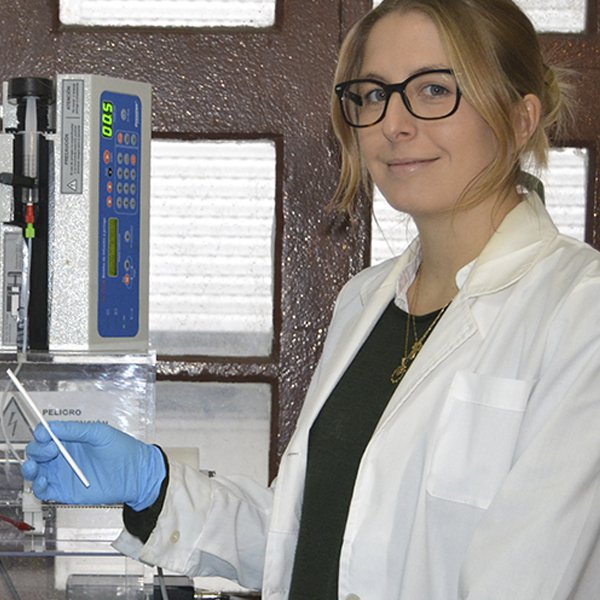A vascular bypass is a surgical
technique widely used to restore circulation to obstructed or damaged blood
vessels, like those caused by various cardiovascular diseases, like
atheosclerosis. During a vascular bypass, a bridge or deviation is created to allow
blood to circulate through or around the affected vessel, using pieces taken
from other veins or arteries, or even artificial materials when it is not
possible to use a biological material. This last option has several
disadvantages, since the body is incapable of regenerating them and they do not
have the same physical properties as natural tissue.
And, consequently, science is actively pursuing new, biocompatible materials
with similar capabilities to those of blood vessels. Florencia Montini´s development
of a conduit made from a new, biomimetic material with the same elastic
properties as blood vessels, which do not produce clots and can be reabsorbed
by the body, has led to her recognition as one of MIT Technology Review,
Spanish edition´s Innovators Under 35 Latin America 2017.
This new material is made up of two polymers: PLLA, which is available
commercially and has similar characteristics to collagen, and PHD, which was
developed in Montini´s lab and is similar to elastin, the Argentinian pioneer
explains. Collagen and elastin are the two primary natural components of the
extracellular matrix of blood vessels. The conduit designed by Montini is
characterized by a structure with several layers and with different proportions
of the two synthetic polymers. In the lab, this configuration has demonstrated
the ability to reproduce the mechanical properties of blood vessels, a
scientific first.
But that is not all. These polymers degrade without releasing toxins into the
human body. Montini confirmed that the degradation time is compatible with
tissue regeneration times, which means that once the surgery has been
performed, the patient´s own body will end up replacing the conduit with newly
generated vascular tissue. "The conduit is implanted exactly as it is
synthesized," the scientist explains. Once grafted, "the patient´s
cells will migrate to the implant and will begin to produce regenerated tissue
while the graft degrades."
According to Montini, there is no available synthetic alternative which offers
all of these properties. Existing options are "more rigid and generate
complications like blood clots and implant rejections." To avoid inducing
clots, the surface of the tube she created is treated with heparin, and in
vitro studies have demonstrated that this reduces the adhesion of platelets,
the cells which form obstructions and clots. The next step is to confirm these
characteristics through in vivo tests.
The doctor at the Harvard-MIT Division of Health Sciences and Technology,
Brigham and Women's Hospital and Innovators Under 35 Mexico 2014 laureates,
Guillermo Ulises Ruiz Esparza, describes this technology as "very
innovative" and adds "Montini´s work could have a significant impact
on the cardiovascular field." This jury member for the Innovators Under 35
Latin America competition highlights that "the development of this type of
technologies has only focused up until now on the biological interactions, not
on the mechanical properties of the grafts like Montini has done."




